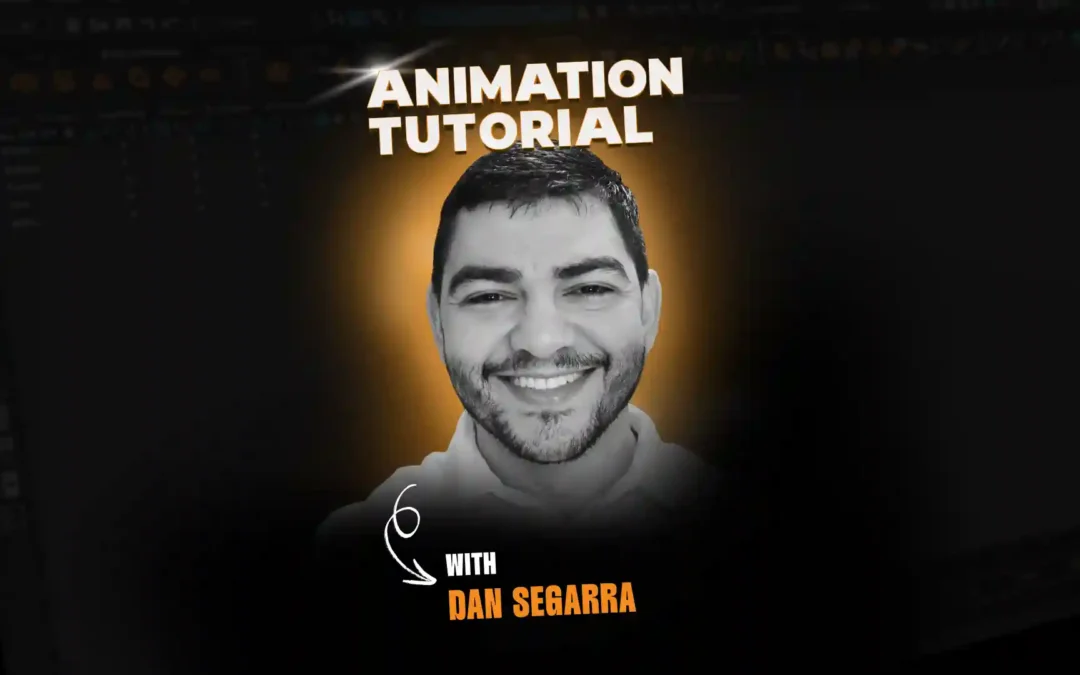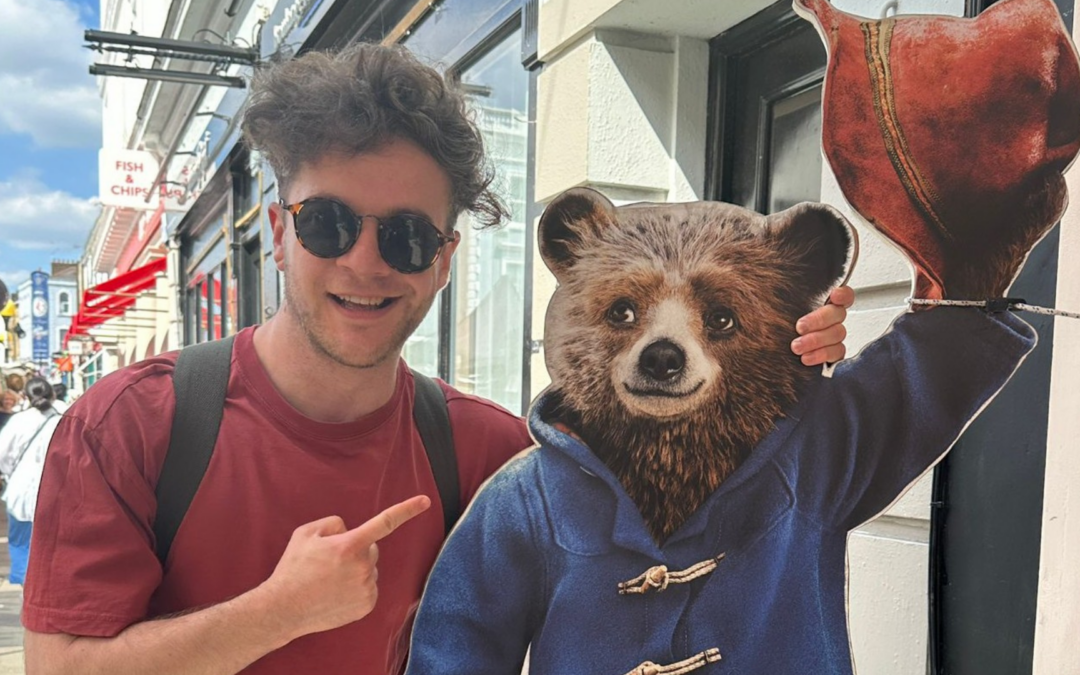
Shawn Kelly was a lead animator for the character, Lockdown, the main villain in Transformers: Age of Extinction
Hello aspiring creature animators! We recently posted tips on what recruiters would like to see in a demo reel, now we have our very own Shawn Kelly, Animation Mentor Co-Founder and Lead Industrial Light & Magic Animator, on what the 6 most common mistakes he sees with creature animation in demo reels. Think your reel is up to par? Read on and get motivated!
– The Animation Mentor Crew
—
More and more studios are hungry for animators who have experience working with animals and creatures in a more realistic style. Many recruiters at visual effects studios, video game studios, and commercials studios have a really hard time finding quality animator candidates as demo reels with strong creature animation are few and far between.
If you are interested in this type of animation, here are some of the most common mistakes I see on demo reels. Avoid these at all costs in order to create more believable and memorable creature animation and improve your chances of landing one of those jobs!
- The animation is too “clean”
- Action, pause, action, pause, action
- The speed doesn’t match the size.
- Look At My Imagination!
- Rotoscoping
- Inconsistent style
Working in a realistic style (or, ideally, a slightly exaggerated “hyper-reality” in order to make your animation more exciting, dynamic, and memorable) means that you will need to have a higher level of detail and complexity in the movements.
This style of animation is an art in and of itself, and requires a slightly different mindset as you approach the work. You will still be using all of the principles of animation that you are used to, but in a more integrated and, often, a more “messy” way.
Adding some dirt to specific curves in just the right way, overlapping the actions while making sure they affect (and are affected by) each other, and being willing to have a slightly less perfect pose or arc at carefully chosen moments can make a huge difference in making your creature work feel real.
Keep in mind that this “messiness” needs to be very subtle. Readable silhouettes are just as important (if not more so) than ever and your arcs still need to feel organic, etc. Subtlety is key with creature work. In the Creature Animation classes, we work with the students to strive for “simplified complexity,” which I know sounds like words that shouldn’t go together, but mastering this concept is a huge part of bringing to life a realistic creature.
Look for opportunities on your creature to add small little details, secondary actions, tiny overlapping actions, muscles firing and relaxing, etc – as long as these are all kept extremely subtle, they can all work together to create the feeling of one large thinking, feeling, breathing complex creature.
Once you identify areas that you can add complexity (this can be as simple as toes spreading as the weight presses onto the foot, or how that toe move affects the claw, etc), then it’s time to simplify these actions in such a way that no individual “little” action draws attention to itself.
A nice dragon sequence from Harry Potter and the Deathly Hallows Part 2 – done by Double Negative
If someone’s first reaction to your epic shot of a dragon roaring is to say “wow, that claw pressing on the ground during the footplant was awesome!” then you are doing something wrong. Those types of movements, intended to add tiny bits of complexity and realism, are not meant to be the stars of the show. They should be felt rather than seen, at least on a first viewing of the shot. The goal is that they will all come together to make that dragon feel huge and real, but the key to pulling that off is to keep them all a bit simplified and unnoticed.
Creature rigs tend to be more complicated and detailed than the average animation rig. Whether it’s a cat or an ogre or a giant robot covered in moving parts or a dragon with complex wing controls, you can bet your bottom dollar that at first glance, the rig will probably look intimidating.
There’s a reason for this, and it’s because we need to achieve that high level of “simplified complexity” mentioned above, and you just can’t do that with limited controls.
Unfortunately, that means that we often see animation on demo reels that have some interesting animal behavior or creature ideas, but those movements tend to be too broken up.
Instead of a gorilla running into frame and picking up a ball and throwing it, we see a gorilla run into frame and come to a stop. Then pick up the ball and stop. Then lift the ball and stop. Then he throws the ball.
Worse, often even those actions themselves can be full of discrete body movements that feel disconnected. Arms moving that aren’t driven by the shoulders, shoulders that don’t react to arms pounding onto the ground, big chest movements that have no effect on the hips, etc.
References of gorillas running
A careful study of live-action reference and a focus on overlapping actions can make a huge difference. Beware the feeling of disembodied limbs or discrete actions that don’t flow through one another. It completely kills the illusion of an organic creature.
Few things can kill a shot quicker than having something that is meant to be large zipping around the screen too fast. Often, animators are more used to animating humans, and we get into a routine of timings that we are used to. When you’re thrown into a situation where it’s time to animate a gorilla or a huge dragon, it can be difficult to wrap our brains around the timing and spacing that this character will need to be using in its movements.
This stands out especially in moments where a character is changing direction, starting an action, or coming to a stop. Often, I will see a large creature doing some cool action and then he comes to a stop that is far too abrupt to accommodate for his weight or to give time for his momentum to naturally dissipate. This kills the feeling of weight and ruins the illusion of size.
Remember – there is no single “correct timing that will work for all characters.” They are all unique. They have different sizes, emotions, shapes, and actions – all of which will radically affect the speed that they will move.
Imagination IS one of the most important aspects of animation. I don’t want to belittle it or downplay the importance of actively working to cultivate and strengthen your imagination.
However, there are times to rely on your imagination and there are times to at least partly set it aside.
Even when working with a fantastic creature design, we need to carefully ground the movements of that character in the real world. Animating some alien quadruped? Look at its anatomy and figure out what quadruped(s) it most resembles. If you don’t base the animation at least somewhat on those real-life animals, people are going to have a hard time buying the performance.
At the 6:50 mark in the video above, ILM Animation Supervisor, Hal Hickel, reviews creature design for the film, Pacific Rim, in this presentation at the Bloomberg Businessweek Design Conference in 2014. A nice reference on how the creature animator thought process works when animating alien creatures.
Sometimes on reels, we see creatures who resemble the anatomy of animals we are familiar with and yet move nothing at all like them. There are probably times to do that, but I would argue that a demo reel is the wrong place, as your work has no context and very limited time to impress. If you have a lion running around like a lizard, we likely aren’t going to marvel at your imaginative choices, we are going to think it looks bonkers and move on to the next reel.
A direct copy of live action reference is going to give you some movement that will feel pretty good. It’ll be solid, it will likely have a decent amount of that “simplified complexity” if you have really studied the reference carefully. It will be good animation.
But will it be great?
Probably not. Reference is a hugely important step to successful creature animation, but being a frame-by-frame slave to it is a mistake. Here’s a couple more words that seem to not go together but are just as important as simplified complexity: subtle exaggeration.
You are the artist. Your job is to look at the reference and to make artistic choices. That’s what makes your animation worth watching. As a creature animator or visual effects animator, your goal is realism, but that doesn’t mean we aren’t using the principle of exaggeration.
You need to filter your reference(s) through your artistic eye and carefully choose what to exaggerate. We make this pose a little more dynamic or that movement a bit snappier or this fall a bit heavier through the use of small (sometimes extremely small) amounts of exaggeration.
It’s this carefully planned “subtle exaggeration” that will take your work out of the realm of feeling “rotoscoped” (which can easily start to feel dead or robotic) and give it that spark of life that makes it memorable and exciting to watch.
Your goal should be to make your work slightly larger than life. That’s what makes it special, but of course the tricky part is keeping those exaggerations within the realm of believability and not “over-animating” the character to the point that it no longer feels real.
A plague of many an animation test (creature-specific or not) is an inconsistent style. There is nothing wrong with stylized animation. All animation styles (from the cartooniest to the most photoreal) are valid and beautiful and none are more artistic or special than the others. What’s important on a demo reel is that the style of the animation, at least within that specific shot, feels consistent.
Very often we will see a nice heavy creature walking along and then do something that feels far cartoonier than the previous few seconds felt and then revert back to Big-Heavy-Creature-mode. The middle of the shot will have quicker movements or overly stylized poses in comparison to the rest of the scene. It’s common that part of a shot will suddenly feel “animated” rather than real.
Any time you are animating anything, it is important to know the style you are working in and keeping that consistent is a big part of an animator’s job. Learn how to do that and show it off on your reel.
___

Are you an advanced animator who wants to learn the finer points of creature animation, including how to animated believable run cycles, manage weight distribution with large characters and animate in both realistic and exaggerated styles?
Register for our Creature Animation: Locomotion workshop and get personalized instruction from senior animation professionals like Nicole Herr, Scott Lemmer and Animation Mentor co-founder, Shawn Kelly. Save your seat – register today!



